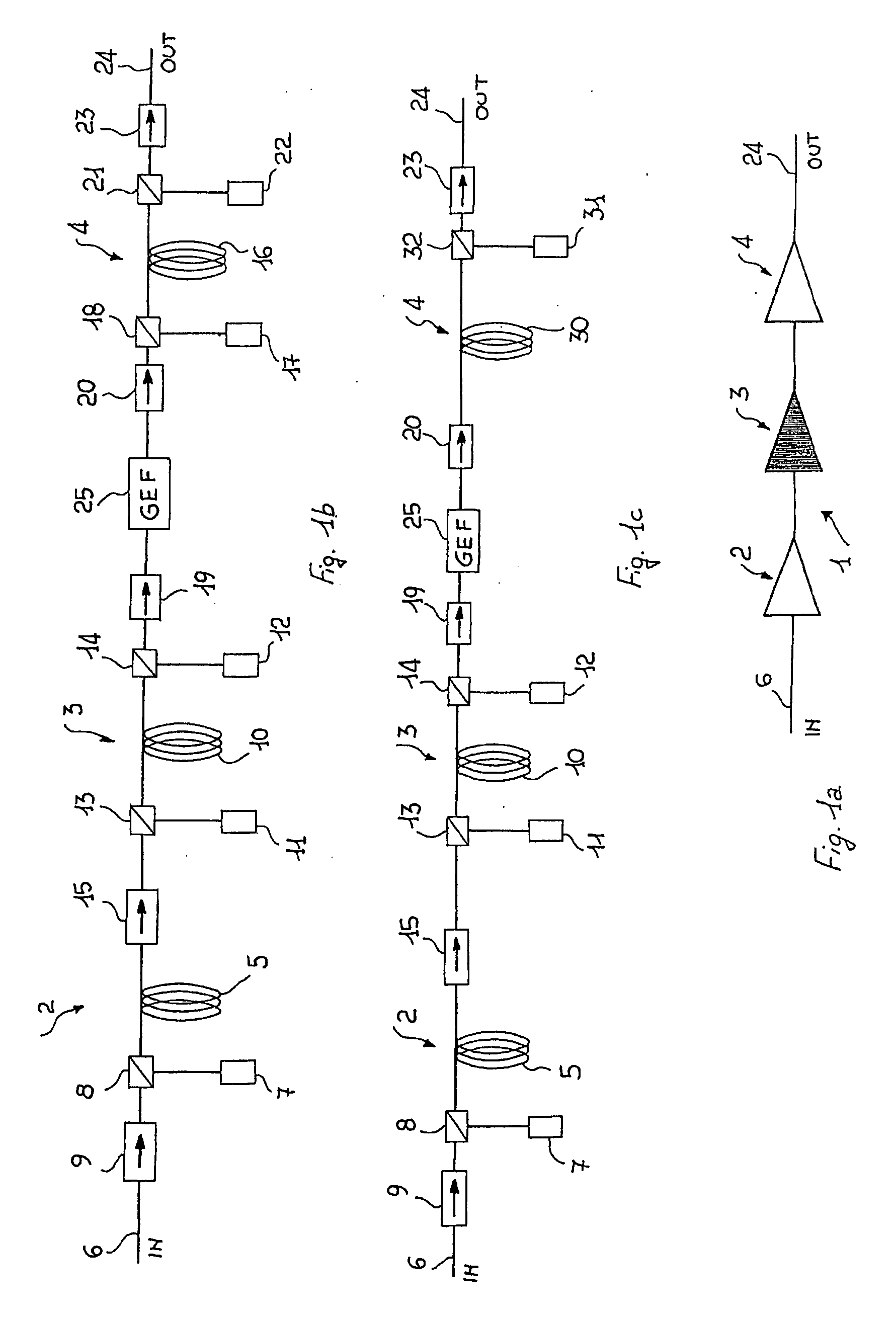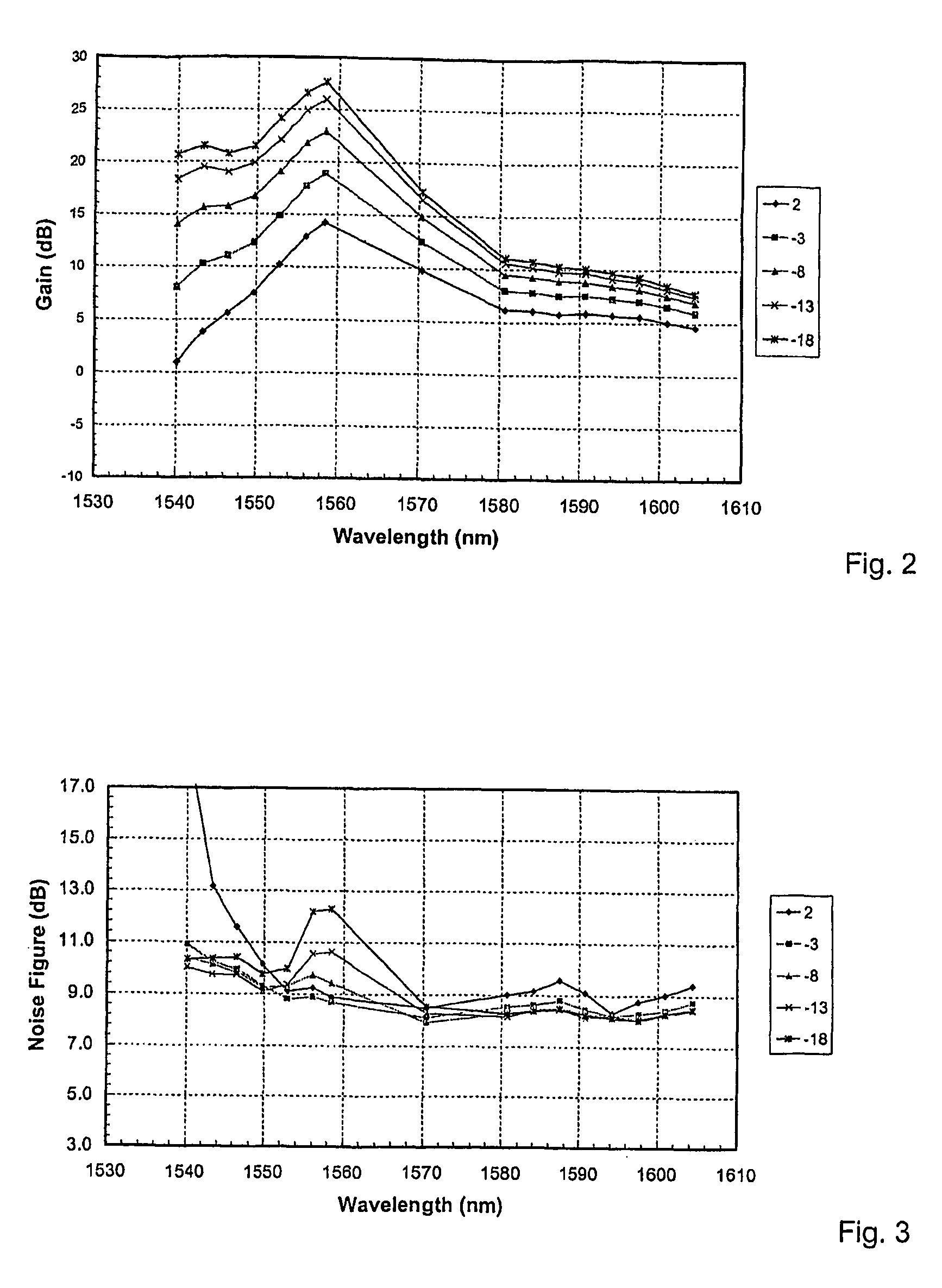Multi-stage optical amplifier optimized with respect to noise, gain and bandwidth
a multi-stage, optical amplifier technology, applied in the direction of optical transmission with multiple stages, electromagnetic transmission, transmission, etc., can solve the problems of low noise, high gain, wide bandwidth, and difficult to achieve in a single optical amplifier, so as to improve noise, reduce noise, and increase the effect of gain
- Summary
- Abstract
- Description
- Claims
- Application Information
AI Technical Summary
Benefits of technology
Problems solved by technology
Method used
Image
Examples
Embodiment Construction
[0041] With reference to FIG. 1a, 1 indicates a three-stage optical amplifier according to an embodiment of the present invention. In particular, an amplifying stage includes a length of amplifying optical fiber associated to at least a pumping source. The optical amplifier 1 comprises a first 2, a second 3 and a third 4 amplification stage connected in series in said order. The three-stage optical amplifier 1 receives at an input in an optical signal 6 to be amplified and outputs at an output OUT the amplified output optical signal 24. The input optical signal 6 includes at least a signal wavelength λS. Preferably, the optical signal carries a number of optical channels λS1, . . . , λSn, comprised between about 1530 nm and 1625 nm, which corresponds approximately to the C- and L-bands. For example, in case of 50 GHz standard ITU-T DWDM channel spacing, the wavelength of the first channel will be 1528.38 nm (corresponding to 196.15 THz in frequency), while the wavelength of the last...
PUM
 Login to View More
Login to View More Abstract
Description
Claims
Application Information
 Login to View More
Login to View More - R&D
- Intellectual Property
- Life Sciences
- Materials
- Tech Scout
- Unparalleled Data Quality
- Higher Quality Content
- 60% Fewer Hallucinations
Browse by: Latest US Patents, China's latest patents, Technical Efficacy Thesaurus, Application Domain, Technology Topic, Popular Technical Reports.
© 2025 PatSnap. All rights reserved.Legal|Privacy policy|Modern Slavery Act Transparency Statement|Sitemap|About US| Contact US: help@patsnap.com



